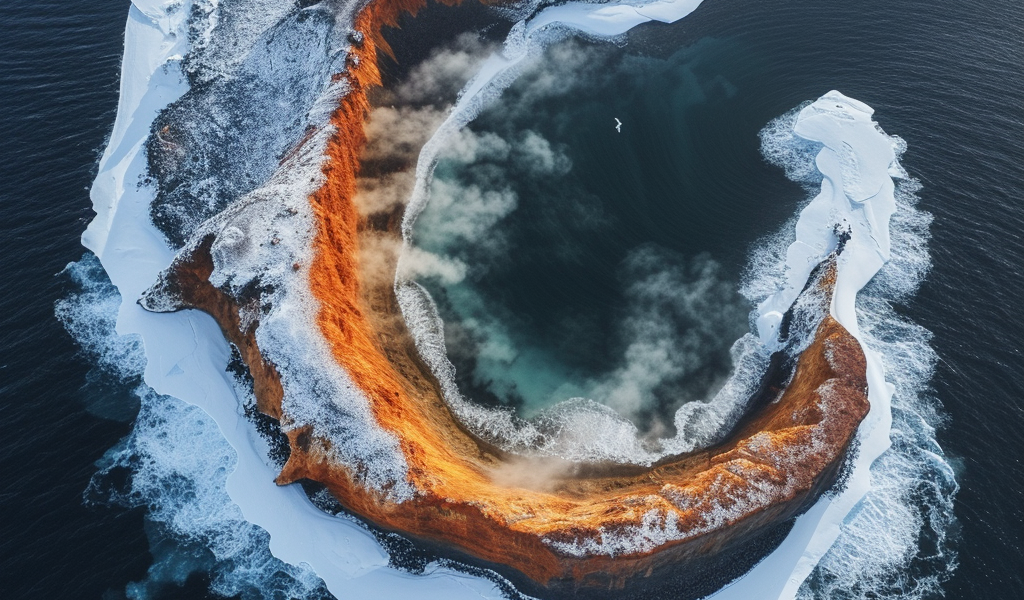Antarctica is home to a rare phenomenon—a clash of ice and fire on Deception Island, an active volcano that offers valuable insights into the potential for life on Mars. Located in the South Shetland Islands, this horseshoe-shaped isle is the only place in the world where ships can sail into the caldera of an active volcano.
The island’s unique ecosystem, characterized by extreme temperature contrasts, hosts a diverse range of life forms. In the surrounding waters, approximately 420 kilometers from Chile’s Port Williams, fish, krill, anemones, and sea sponges thrive. Meanwhile, distinct species of lichen and moss flourish on the island’s surface, despite its uninhabited status. Deception Island is also home to a significant colony of chinstrap penguins, seabirds, seals, and sea lions.
Despite enduring multiple eruptions, including those in 1967, 1969, and 1970, which led to the devastation of British and Chilean bases and the evacuation of an Argentine base, life consistently re-establishes itself on the island. The island’s steam vents, or fumaroles, maintain water temperatures of around 70 degrees Celsius, even as air temperatures can plummet to -28 degrees.
Spanish planetary geologist Miguel de Pablo highlighted the island’s resemblance to Mars, emphasizing the similarity in volcanic activity and cold conditions. This comparison provides valuable insights for scientists studying the potential for life on the red planet.
Deception Island, first visited by British sealers in 1820, boasts a rich history, with abandoned scientific bases and a deteriorating whaling station adding to its allure. Furthermore, the island has become a popular destination for tourist cruises to Antarctica, attracting visitors eager to witness this remarkable clash of ice and fire.





